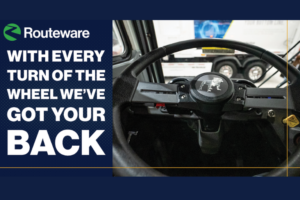The move toward digital solutions in municipalities continues, driven by technology and customer preference as well as global issues. As online and app-based tools have become ubiquitous, people in every demographic are turning to digital tools to take care of tasks in every part of their lives. Not only have we become used to 24/7 self-service tools, most people prefer them – as long as they’re easy and intuitive.
The digital wave was already a major swell when the pandemic came along and made good-to-have online tools an absolute necessity. As organizations of all kinds found it necessary to limit in-person services in order to keep people safe, those with established digital services were able to successfully pivot. Ongoing personnel shortages have only underscored the necessity for a robust self-serve platform.
Solid waste and recycling leaders have understood the need for on-demand education and information since China’s 2017 changes to the recycled materials they’re willing to accept from the global market. That news highlighted the need to reduce contamination in recycling and increase participation in proper sorting in order to keep programs going.
Many IT professionals working for solid waste organizations are being asked to make a “build or buy” decision regarding custom waste management software solutions, with the key question being whether it’s better to develop a custom solution in-house or outsource to another company. This resource is intended to help you flesh out your business case with specific considerations that will go into your decision making.
Costs of Custom Waste Management Software Solutions
A discussion of cost is unavoidable, but it involves multiple factors. If internal IT staff are assigned to build a digital solution, costs will include their salary as you factor in the time they’ll spend on the system.
But you’ll also need to calculate the opportunity cost of work that’s not being done as they research, conceptualize, design, and code an internal custom waste management software solution. Outsourcing options include hiring a developer for a custom build or selecting a purpose-built solution that’s already built for supporting waste management programs.
As you might expect, the cost of developing an online solution or app varies widely depending on what you’re expecting it to do. Here are some ballpark numbers to use as a guide:
- Median app development cost is $171,450 (Clutch survey).
- Depending on complexity, apps can range in cost from about $30,000 to over $700,000 (Net Solutions).
- Expect to pay about $100 per hour for app development, with a project that will take 3+ months to complete.
The cost of app development depends on functionality, features, UX/UI complexity, back-end infrastructure, platform(s), devices supported, and development approach. It’s critical to carefully define your project scope for internal IT assessment or RFP development. As you can imagine, given the wide span of potential costs, developing your own app is possible to do on a limited budget, but any unforeseen issues can cause the total cost to rapidly balloon, costing far more than originally anticipated.
Another potentially cost-saving option for municipalities to consider is joint purchasing. Sourcewell, formerly the National Joint Powers Alliance, is a governmental agency that vets vendors and negotiates nationally-leveraged volume pricing. HGACBuy is another nationwide government procurement service.
These can certainly help you in terms of overall cost, as you’re splitting this cost with one or more other entities, though should you be choosing to build your own app, this may subject you to additional considerations, as the needs of other entities invested in the purchase will also need to be considered.
Maintenance and Compatibility
App creation doesn’t end at launch. Every digital tool has to include budget, time, and resources for ongoing maintenance. Maintenance will be required for bug fixes, feature enhancements, and to maintain compatibility with browser and device updates. Consider the following:
- Many of the top Internet browsers update every four weeks.
- In 2018, Android and Apple operating systems issued a total of 12 updates.
- More than half of the 100 most successful apps update every 9 days or less (Storemaven, June 2020).
Neglecting updates can doom your app on multiple fronts. If an app crashes frequently, the app store’s algorithm will cease to promote it, driving down the number of new users for your custom waste management software solution over time. Introducing new features and UX/UI updates also shows users that you’re responding to their needs and keeping your offering fresh. Updates also help keep your rating history in positive territory.
Choosing an established vendor for your online tool or app means you’ve got dedicated experts handling ongoing maintenance and recommending changes that help you stay ahead when it comes to your customer service commitment.
In the long term, the costs of continued maintenance are one of the biggest issues in creating your own software, so if this is the path you’re choosing to take, be sure to set aside the budget for this to be done regularly.
Customer Preference and Usability
Most consumer segments prefer digital services for conducting their day-to-day tasks. And they’re not giving solid waste service providers a pass when it comes to having intuitive, easy-to-use tools. According to a NextGov report (December 2020):
- 67 percent of those surveyed stated they preferred using government services online.
- Almost 40 percent of respondents want digital government services to be easier to use.
- The pandemic fundamentally changed how people respond to digital government services: In March 2020, 54 percent of people surveyed said they preferred in-person services; by August of the same year, that had plunged to 16 percent.
Digital tools provide an opportunity for municipalities and private waste haulers alike to be both fiscally responsible and customer-focused. Making the decision to buy allows you to quickly deliver proven tools that fit what customers are looking for and the ease they’ve come to take for granted.
Multi-Language Support
As urban communities continue to grow and diversify, IT professionals must adapt communication tools so they’re accessible to residents who prefer languages other than English. This trend is important in many English-dominant countries:
- According to the US Census Bureau’s language projections, more than 57 million U.S. residents speak a language other than English at home.
- Between 1980 and 2009, the number of U.S. residents speaking a language other than English at home rose 148 percent.
- In Canada, 17.5 percent of the population speaks more than one language at home, with 11.5 percent reporting speaking languages other than English and French, according to Statistics Canada.
Providing appropriate support for users’ language preferences helps engage people so they feel connected to their community and are more willing to contribute to the success of solid waste programs and services.
The U.S. General Services Administration (GSA) strongly advises against the use of machine or automatic translations and encourages municipalities to enlist qualified language professionals to review any translated materials or tools before launch. Hasty translations can produce embarrassing results, while professional translations take into account more than just words to also consider important cultural nuances.
Whether you’re buying or building a custom waste management software solution, make sure that multi-language support is a part of it, or risk alienating customers by lacking a relatively simple feature to implement.
Compliance and Accessibility
Building digital tools means taking into account the abilities of all users. It’s not only the right thing to do, it’s required by law. Accessibility is a right defined by the United Nations Convention on the Rights of Persons with Disabilities, which has been ratified by 160 countries, including the United States and Canada. Consider the following:
- 15 percent of the world identifies as having a disability.
- One in four adults in the United States is living with some type of disability, according to the CDC.
- According to Statistics Canada, more than 5.3 million Canadians—almost 16 percent of the population—lives with some form of disability.
The 30-point Software Accessibility Checklist published by the U.S. Department of Education provides high-level guidance for achieving accessibility in the digital space. In Canada direction is provided by the Web Content and Accessibility Guidelines known as WCAG.
Building accessible tools requires both an upfront and ongoing commitment to understanding legal requirements and user needs. In turn, accessible tools create a better overall customer experience, reduce risk of complaints and lawsuits, and improve public perception of services.
Security
Robust security must be fundamental to the development of any online tool, especially if a main objective is to give residents easy access to services. Because the sad truth is that bad actors are continually looking for vulnerabilities they can exploit, and government entities are some of their favorite targets. According to a Forbes report in June 2021, the facts are grim:
- Research by Barracuda Networks indicates that 44 percent of global ransomware attacks in 2020 targeted municipalities.
- The average cybersecurity breach costs states between $665,000 to $40.53 million, with a median cost varying from $60,000 to as high as $1.87 million.
- The average ransom amount demanded by cybercriminals from 2013-2020 was $835,758.33.
In addition to the cost and disruption they cause, municipal cybersecurity incidents often become high-profile news stories. When it’s your mission to serve residents, maintain a beautiful community, and protect the environment, the last thing you need is to be a face on the news.
Security must be a number one concern, whether you’re building or buying custom waste management software solutions. Your IT security team will be asking the tough questions to make sure security is part of the design and an ongoing consideration.
Continuity
Even before Covid closed down in-person service offices and scattered government employees to remote work locations, municipalities and counties were getting tangible reminders of the need to build resilient processes and assure continuity. When municipal buildings are made unusable – even temporarily – by natural disasters or civil unrest, critical processes can be disrupted, too.
The aftermath of a disaster may be just the time when residents need help from their local government, even if all they need is to submit a request for debris removal. This highlights the importance of software-as-a-service (SaaS) that doesn’t depend on a server in a potentially vulnerable building.
Scalability
Even though your digital waste management tools are localized to a single community, scalability is an important consideration. Typically, app use grows as word gets out about its ease of use and convenience. Millennials (born between 1980 and 2000) have grown up with digital tools, so growth will continue to accelerate as more and more of them establish their own households.
Scalability is also a situational issue. A custom waste management software solution built for day-to-day needs should also be able to flex for emergent events such as flooding or extreme weather. Scalability is another reason governments are migrating to as-a-service offerings:
- A Hewlett Packard Enterprise survey indicates nearly 90 percent of the IT experts from large organizations polled across Europe and the United States are in the process of migrating to as-a-service offerings.
- 75 percent of IT professionals expect their organizations to move toward full adoption of as-a-service offerings within the next five years.
Integration
One of the primary challenges in purchasing custom waste management software in a government environment or hauling enterprise is finding a solution that meets customer needs while connecting seamlessly to existing data, such as GIS data.
The faster and easier the integration, the sooner a tool can be put to work for your community. If your solid waste department is struggling with recycling contamination or high call volumes in your service center, you don’t want to wait months for an app to be delivered just to find that it doesn’t integrate with current systems. Integration means:
- Solutions that act as a layer on top of existing data, requiring very little effort to package or clean up data before launch.
- Widgets and apps designed to match the municipality or hauler’s own brand. This helps build trust and recognition, strengthening opportunities for further engagement.
Building the Business Case
Decision makers within your municipality will have different biases based on their experience when it comes to building versus buying waste management solutions. Encourage them to look at all components of the decision, as outlined in this resource.
There may be hidden costs or opportunities that should be clarified before going down a particular path. Make sure that stakeholders aren’t allowing biases to influence the final decision, and you’ll be on the path to getting the best custom waste management software solution for your specific needs.
Routeware’s tools have been proven in many use cases and circumstances. Our team will be happy to share best practices and the information you need to build your own business case.
Learn more. Routeware provides compliant, secure, cost-effective, leading-edge digital waste communication tools for municipalities.
Interested in learning more about what we can do for you? Get Started today with your initial quick and free consultation.





